This article was medically reviewed by Janice Litza, MD. Dr. Litza is a board certified Family Medicine Physician in Wisconsin. She is a practicing Physician and taught as a Clinical Professor for 13 years, after receiving her MD from the University of Wisconsin-Madison School of Medicine and Public Health in 1998.
There are 12 references cited in this article, which can be found at the bottom of the page.
This article has been viewed 44,011 times.
Oral thrush, or oropharyngeal candidiasis (OPC), is a fungal infection within the mouth caused by a genus of yeasts known as candida. If the environment in the mouth or throat becomes unbalanced, candida can multiply, leading to oral thrush. The primary symptom of oral thrush is white lesions in the mouth, though thrush might also be accompanied by difficulty swallowing and an abnormal taste in the mouth. If you notice lesions or other unusual developments in your oral health, consult a medical professional immediately.[1]
Steps
Recognizing Symptoms
-
1Look for white lesions in the mouth. These lesions (a catch-all term for damaged or abnormal tissue) are plaque-like because they are raised and can be in various sizes or come together to cover larger areas. The lesions are typically white and look like cottage cheese, though they might also be red and raw-looking. They might be located on your tongue, gums, tonsils, inner cheeks, or on the roof of your mouth. They will probably be quite swollen and might bleed if rubbed or scraped.[2]
- Lesions are the primary indicator that you have oral thrush. Aside from lesions, there are often no other symptoms.
-
2Look for dryness around the mouth. If the corners of your mouth are red, irritated, or cracked and bleeding, you might have oral thrush. You might also feel as if you have a cotton ball inside your mouth.[3]
- This phenomenon is known as angular cheilitis.
Advertisement -
3Stay alert for unusual oral sensations. Individuals with oral thrush might develop a salty, bitter, metallic, or acidic taste in their mouths. Alternately, you might feel as though your mouth is being burned by scalding water. You might also lose your sense of taste entirely if you have oral thrush.[4]
-
4Look for difficulty swallowing. If oral thrush has spread to the throat or esophagus you might have a hard time swallowing. Food might get stuck in your throat, causing you to choke. You might also have a sore throat and a raspy voice.[5]
-
5Stay alert if you experience pain during breastfeeding. If you are a breastfeeding mother and your child has oral thrush, your child might spread candida to your breasts. If your breasts are red, sensitive, itchy, or cracked, you and your child might have candida. You might also notice the skin of the areola is shiny or flaky. Finally, a high level of pain concentrated on the nipples could indicate thrush.[6]
- If your child is unusually fussy or whiny, or has trouble feeding, it might have oral thrush.
- Check for oral thrush in babies by looking for lesions in the mouth.
- Oral thrush is quite common in babies. If your baby has thrush, you can continue breast feeding. You can also apply the same medication that pediatrician prescribes for your baby onto your nipples until the lesions are cleared.
-
6Identify individuals who are at a higher risk of developing oral thrush. Certain groups, due to their weakened immune systems, are more susceptible to developing thrush. Stay on the lookout for signs of thrush if you belong to one of these groups, or know someone who belongs to these groups, including:[7]
- Babies
- The elderly
- Individuals with HIV, AIDS, or other immune system deficiencies
Reducing Your Risk for Oral Thrush
-
1Rinse your mouth after taking asthma medication. If you take corticosteroids -- for instance, through an asthma inhaler -- you are at greater risk for oral thrush than the mainstream population. You can reduce this risk by swishing clean water in your mouth for about five seconds after taking your medication, then spitting it out.[8]
-
2Maintain excellent dental hygiene. Brush at least twice each day with a fluoride toothpaste and a soft-bristled brush. Do not hold your brush in such a way that the bristles are directly perpendicular to the surface of the teeth. Instead, angle the bristles slightly toward the gums. Rinse your toothbrush after use and keep it in an upright position somewhere clean.[9]
- Toothbrush containers are useful for ensuring your toothbrush dries and stays clean.
- Visit your dentist regularly. You should see your dentist at least twice each year.
-
3Make careful dietary choices. Certain foods might lead to an increase in your likelihood to develop a candida infection. Avoid sugary foods and foods with a high content of yeast. Beer, soda, candy, baked goods, and bread should be avoided.[10]
- Additionally, keep your blood sugar within normal levels. If you have diabetes, take extra care to regulate your blood-sugar levels by consuming no more added sugar than is recommended. Blood sugar levels above the norm can lead to an increase in candida.
-
4Keep your dentures clean. Dentures make you a likely candidate for oral thrush. About one in four individuals with complete dentures encounter oral thrush at some point. If you have dentures, ensure you keep them clean using denture cleaning solvent each night. Disinfect the denture before inserting it in your mouth by dipping it in boric acid (a powerful antibacterial agent) or a 10% bleach solution mixed with water. Rinse the denture with water after using either of these disinfection methods.[11]
-
5Treat vaginal yeast infections. If you are pregnant, you could pass oral thrush onto your child if you suffer from vaginal yeast infections. See a doctor If you have symptoms of a yeast infection. Your doctor will give you a prescription for the infection. Symptoms of a yeast infection include:[12]
- An itchy sensation in or around the vagina
- Vaginal discharge that is thick, white, or clumpy
- Redness or irritation near the labia
- Pain during urination or intercourse
Getting Treatment
-
1Prepare to see the doctor. Make a list of your symptoms. Write down anything about your health that may seem strange or abnormal. Make another list of all medications, vitamins, and supplements you take. Finally, write a list of questions you have for the doctor. For example, you might want to know:[13]
- What is the best treatment for this illness?
- Are treatments generally successful?
- Are there any side effects of treatment?
-
2See a doctor. The first step in fighting oral thrush is to see a doctor. The doctor will probably be able to identify thrush with a simple visual examination of your throat, but he or she may need to scrape throat tissue with a cotton swab and examine the tissue under a microscope. Other examinations might include:[14]
- A blood test, in which your blood is drawn and then analyzed for related conditions like abnormally high blood sugar.
- An endoscopic exam. If you have extensive disease or if it is difficult to treat, then you might be referred to an ENT doctor who can do a limited scope of your mouth and throat or to a gastroenterologist who would do a scope of your esophagus and stomach.
-
3Get an antifungal medication. Medication prescribed by a qualified medical doctor is the standard treatment. Your doctor might prescribe pills, a medicated mouthwash solution, or antifungal lozenges.[15]
- Take your medication exactly as prescribed. If you do not treat your oral thrush properly, the condition could develop into invasive candidiasis, a fungal infection that occurs when the fungus enters the blood. Once it becomes blood-borne, the infection will spread throughout the body.
- Contact your doctor if your oral thrush is not responding to treatment. You may need to get a fungal culture to find out more about the specific nature of the candida fungus you’re infected with.
Expert Q&A
-
QuestionHow long does it take to get rid of thrush?
 Janice Litza, MDDr. Litza is a board certified Family Medicine Physician in Wisconsin. She is a practicing Physician and taught as a Clinical Professor for 13 years, after receiving her MD from the University of Wisconsin-Madison School of Medicine and Public Health in 1998.
Janice Litza, MDDr. Litza is a board certified Family Medicine Physician in Wisconsin. She is a practicing Physician and taught as a Clinical Professor for 13 years, after receiving her MD from the University of Wisconsin-Madison School of Medicine and Public Health in 1998.
Board Certified Family Medicine Physician It may take one to two weeks, sometimes longer. When using an oral rinse or lozenges, especially for infants, use a soft toothbrush to gently scrub the lesions as this may help with faster recovery. You then need to throw the toothbrush away. Use the rinse or lozenges until there is no sign of the white plaques for two days. If your doctor prescribes pills, it will be for a specific time period and might need to be extended if lesions are still present.
It may take one to two weeks, sometimes longer. When using an oral rinse or lozenges, especially for infants, use a soft toothbrush to gently scrub the lesions as this may help with faster recovery. You then need to throw the toothbrush away. Use the rinse or lozenges until there is no sign of the white plaques for two days. If your doctor prescribes pills, it will be for a specific time period and might need to be extended if lesions are still present.
Warnings
- You might be at greater risk for oral thrush if you have HIV or AIDS.⧼thumbs_response⧽
References
- ↑ https://www.mayoclinic.org/diseases-conditions/oral-thrush/symptoms-causes/syc-20353533
- ↑ https://www.cdc.gov/fungal/diseases/candidiasis/thrush/index.html
- ↑ https://www.mayoclinic.org/diseases-conditions/oral-thrush/symptoms-causes/syc-20353533
- ↑ https://www.nhs.uk/conditions/oral-thrush-mouth-thrush/
- ↑ https://www.cdc.gov/fungal/diseases/candidiasis/thrush/index.html
- ↑ https://www.mayoclinic.org/diseases-conditions/oral-thrush/symptoms-causes/syc-20353533
- ↑ https://my.clevelandclinic.org/health/diseases/10956-thrush
- ↑ https://www.mayoclinic.org/diseases-conditions/oral-thrush/symptoms-causes/syc-20353533
- ↑ https://www.nhs.uk/conditions/oral-thrush-mouth-thrush/
- ↑ https://www.mayoclinic.org/healthy-lifestyle/consumer-health/expert-answers/candida-cleanse/faq-20058174
- ↑ https://www.nhs.uk/conditions/oral-thrush-mouth-thrush/
- ↑ https://www.cdc.gov/fungal/diseases/candidiasis/genital/index.html
- ↑ http://www.mayoclinic.org/diseases-conditions/oral-thrush/basics/preparing-for-your-appointment/con-20022381
- ↑ https://www.mayoclinic.org/diseases-conditions/oral-thrush/diagnosis-treatment/drc-20353539
- ↑ https://www.cdc.gov/fungal/diseases/candidiasis/thrush/index.html
About This Article
To recognize thrush symptoms, look for white lesions on the mouth, which may appear similar to cottage cheese. Additionally, pay attention to signs of dryness around the mouth, including redness, cracking, and bleeding. You may also notice strange tastes, like a salty, metallic, or acidic taste. If the thrush spreads to your throat, you may have difficulty swallowing food and drink. As soon as you notice any of these symptoms, make an appointment with your doctor, who can confirm the diagnosis and recommend a treatment plan. For tips from our Medical co-author on how to tell if you’re at higher risk of contracting thrush, keep reading!


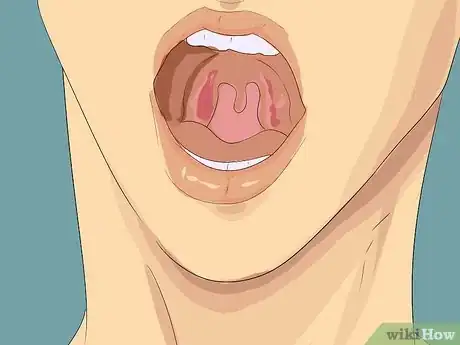
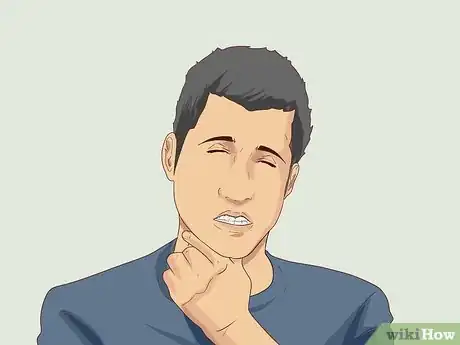



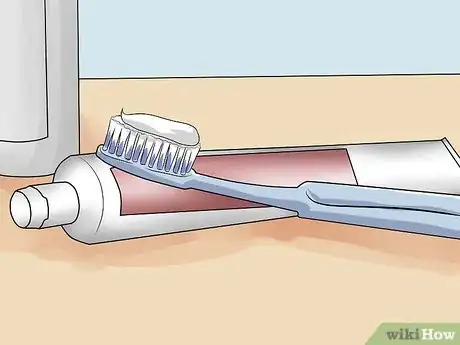
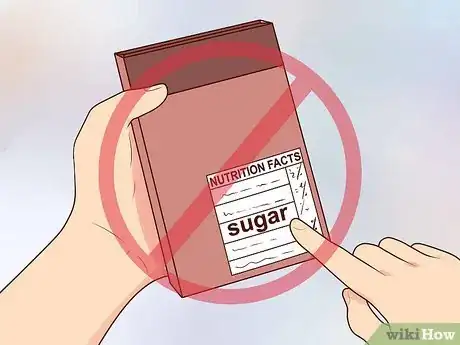
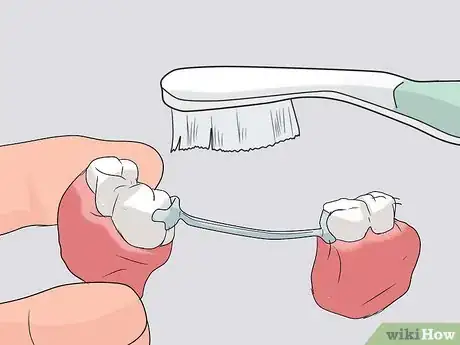
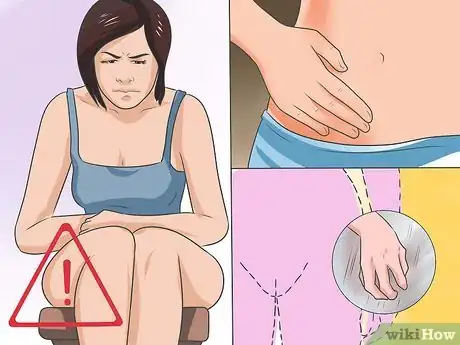


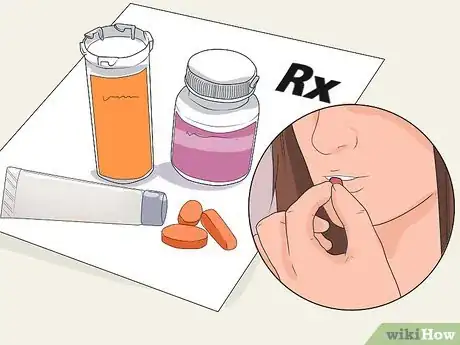




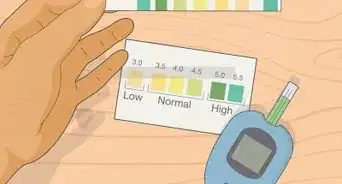
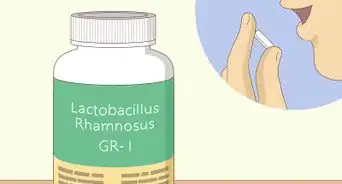



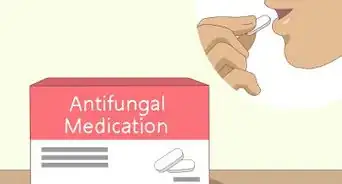
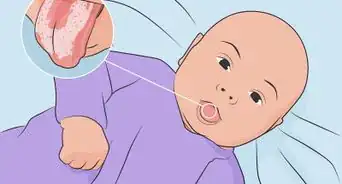












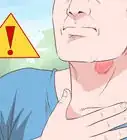





































Medical Disclaimer
The content of this article is not intended to be a substitute for professional medical advice, examination, diagnosis, or treatment. You should always contact your doctor or other qualified healthcare professional before starting, changing, or stopping any kind of health treatment.
Read More...